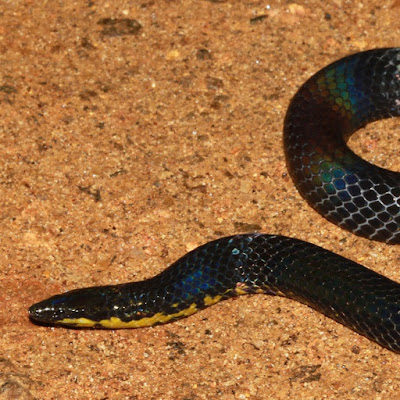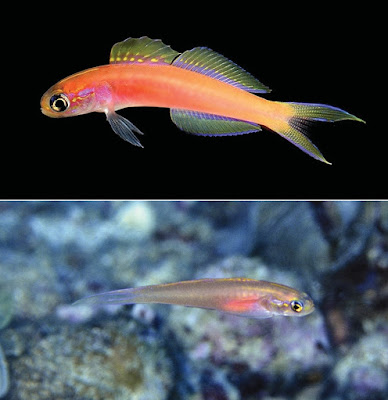[Most Recent Entries] [Calendar View]
Monday, November 13th, 2017
| Time | Event | ||
| 2:27p | [Herpetology • 2017] Aspidura ravanai • A New Species of Aspidura Wagler, 1830 (Squamata: Colubridae: Natricinae) from Sri Pada Sanctuary (Peak Wilderness), Sri Lanka
Abstract We describe a new species, Aspidura ravanai sp. nov., representing the eighth species of the genus known from Sri Lanka. The new species is readily distinguished from all other congeners by its colour pattern, scalation, and genetic distinctiveness. Our molecular results indicated that Aspidura began diversifying in the Miocene approximately 18 Ma, and A. ravanai sp. nov. diverged from its likely sister lineage A. trachyprocta at least 6.2 Ma. The species is currently known only from the type locality, on the western slopes of Sri Pada Peak in the central highlands of Sri Lanka. Keywords: Reptilia, Aspidura trachyprocta, divergence dating, Ravana, rough-side snakes, new taxa, Sabaragamuwa province, South Asia, systematics L. J. Mendis Wickramasinghe, Dulan Ranga Vidanapathirana, H. K. Dushantha Kandambi, R. Alexander Pyron and Nethu Wickramasinghe. 2017. A New Species of Aspidura Wagler, 1830 (Squamata: Colubridae: Natricinae) from Sri Pada Sanctuary (Peak Wilderness), Sri Lanka. Zootaxa. 4347(2); 275–292. DOI: 10.11646/zootaxa.4347.2.4 | ||
| 5:30p | [Ichthyology • 2017] Navigobius kaguya • A New Species of Ptereleotrine Goby (Teleostei: Gobiidae) from the West Pacific Abstract Navigobius kaguya is described on the basis of two specimens from the Ryukyu Islands, Japan, and Luzon, Philippines. It differs from other described species of the genus in live coloration, and in having: second dorsal-fin rays I,16; anal-fin rays I,16; pectoral-fin rays 21–22; gill rakers 5–6 + 17; and first dorsal fin weakly to moderately incised between spines, taller than second dorsal. It closely resembles an undescribed species from Bali and the Maldives, but differs in lacking an orange-red mid-lateral stripe. The possible placement of Navigobius khanhoa in Oxymetapon is discussed. Keywords: Pisces, ichthyology, taxonomy, Japan, Philippines Navigobius kaguya new species New standard Japanese name: Kaguyahime-haze English common name: Kaguya’s dartfish Diagnosis. Navigobius kaguya differs from congeners in the following: second dorsal-fin rays I,16; anal-fin rays I,16; pectoral-fin rays 21–22; gill rakers 5–6 + 17; first dorsal fin weakly to moderately incised between spines, taller than second dorsal; and live coloration (first dorsal fin yellow-grey to yellow, basally purple with 1-4 rows of yellow spots; sides of body without orange-red lateral stripe). Etymology. Named after the Moon Princess Kaguya from the Japanese folk tale Taketori Monogatari (The Tale of the Bamboo Cutter). It alludes to the small spots on the first dorsal fin, which resemble the graphics used in moon phase charts, and acknowledges that the species occurs in Japanese waters. The name was selected by school students at education workshops associated with University of Sydney performances of 2071: A Performance about Climate Change. Habitat and distribution. Navigobius kaguya is known only from Sagami Bay and the Ryukyu Islands, Japan, and the west coast of Luzon, Philippines (Figure 7). It appears to occur singly or in small groups in silty areas, with sand or mud-bottom or low-relief reef at depths ranging from 30–60 m. Anthony C. Gill, Yi-Kai Tea and Hiroshi Senou. 2017. Navigobius kaguya, New Species of Ptereleotrine Goby (Teleostei: Gobiidae) from the West Pacific. Zootaxa. 4347(2); 371–380. DOI: 10.11646/zootaxa.4347.2.11 |
| << Previous Day |
2017/11/13 [Calendar] |
Next Day >> |






